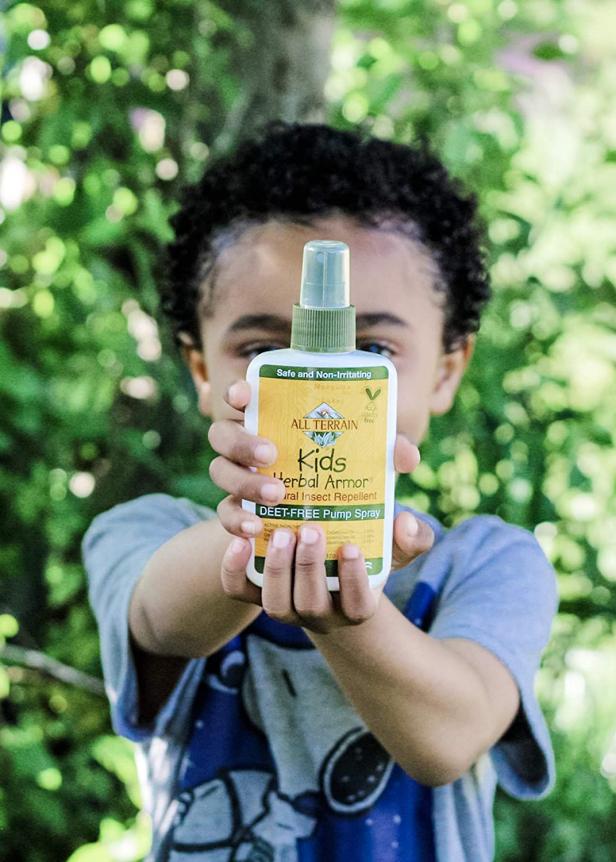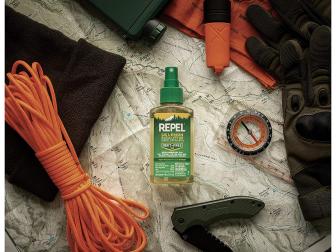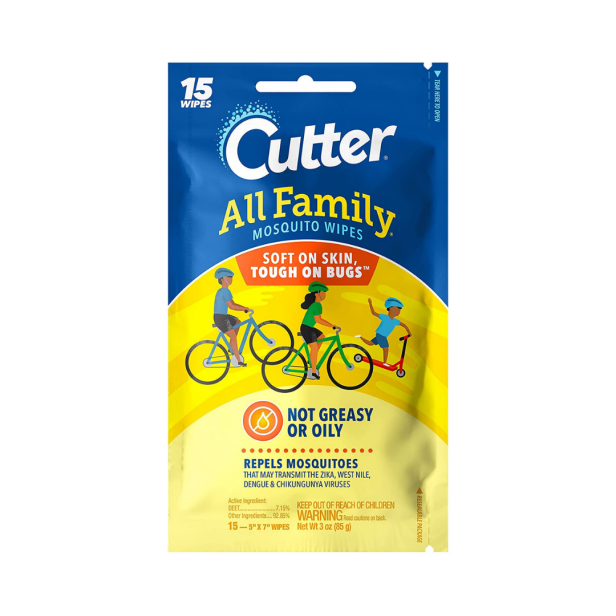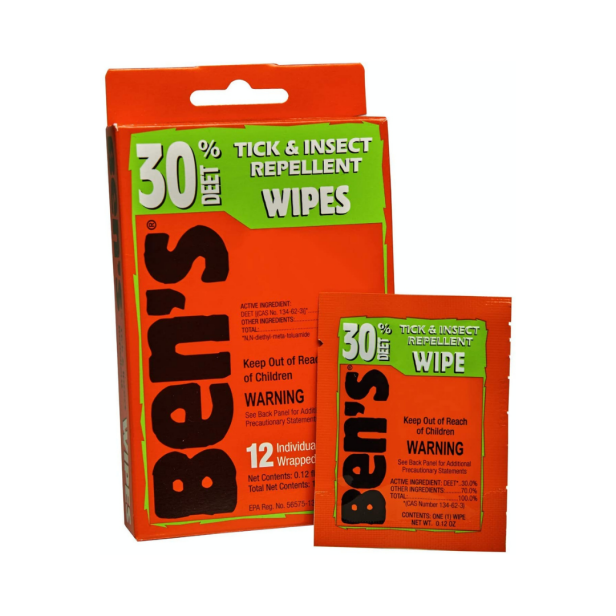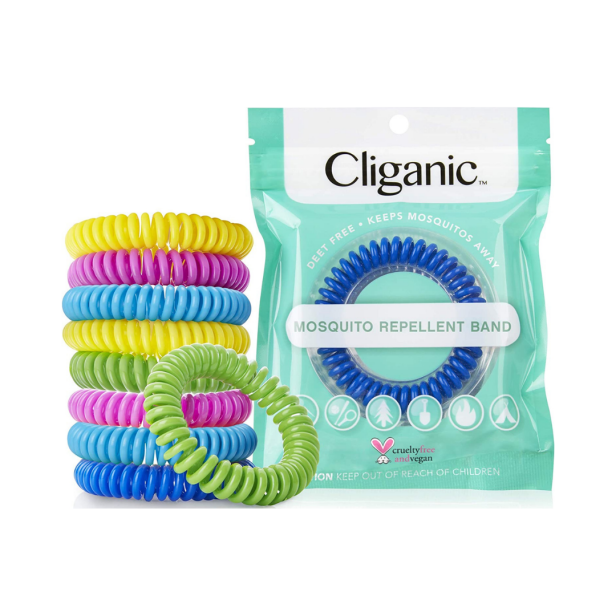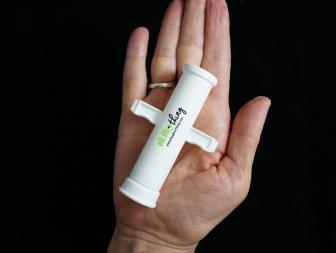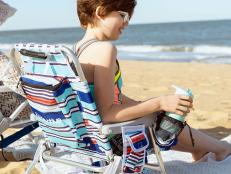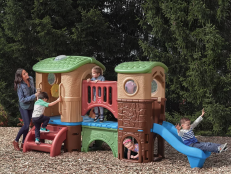The Best Bug Repellents for Kids
HGTV editors and a pediatrician share recommendations on how to keep kids bite-free this summer.

Ah, the joys of summer: pool days, outdoor adventures, ice cream and sunshine. One thing no one looks forward to, though? Bug bites. Pesky mosquitoes and ticks suck the fun out of summer faster than ice cream melts. To help protect your kids against these annoying buggers and get back to carefree outdoor living, we rounded up the best bug repellents recommended by our editors as well as health and safety tips from a pediatrician.
One of the most important reasons to use bug repellents is to reduce the risk of infection from tick- and mosquito-borne diseases such as Zika, Lyme, Rocky Mounted Spotted Fever and West Nile Virus. "It's great for kids and families to be outside to play and take hikes in the woods," said Dr. Sophie Balk, Attending Pediatrician at Children's Hospital at Montefiore, Professor of Pediatrics at Albert Einstein College of Medicine and member of the AAP Council on Environmental Health and Climate Control. "Unfortunately, insects are outside too! Diseases transmitted by certain insects can cause serious health effects in children and adults." Generally, you can avoid serious illness by checking for ticks after outdoor play and appropriately using insect repellent.
Is DEET safe to use?
According to the Center for Disease Control (CDC), the Environmental Protection Agency (EPA), the American Academy of Pediatrics (AAP) and Dr. Balk, bug repellent with 10 to 30 percent DEET is safe to use on children who are 2 months of age or older. "Using an insect repellent that works well – such as DEET – is recommended when there's a possibility of getting a serious illness transmitted by the bite of an insect," said Dr. Balk. "DEET can also be used when insects are likely to be annoying, such as at a barbeque or beach." Of course, you can always check with your pediatrician if you have concerns or specific questions. Dr. Balk also suggested using the EPA's repellent search tool to find an approved product.
Because DEET is toxic if ingested, you shouldn't leave these products within reach of children. It's best to apply sprays in an open area so children don't inhale them. You shouldn't apply sprays containing DEET directly to a child's face or hands. Instead, spritz the bug repellent to your hands first, then apply it to your child's body to avoid possible inhalation. When you go inside, Dr. Balk instructs parents to wash their children's skin with soap and water, do a tick check and wash clothing before wearing again.
DEET is proven to be effective at repelling mosquitoes and ticks whereas non-chemical repellents, like picaridin and essential oils, need further study to determine their effectiveness at repelling ticks. "Most 'natural' insect repellants repel insects only for a short time," Dr. Balk cautions. "These products can be applied if there is no concern about getting an insect-borne illness. If there is a concern, a product such as DEET is needed."
What if my child has sensitive skin?
There are other non-topical ways to prevent tick and mosquito bites. For newborns, use a mosquito net draped over a stroller or playpen. Dress older children and toddlers in lightweight, long-sleeved shirts and pants. A sun hat may even help keep bugs out of children's faces.
Dr. Balk recommends tucking in shirts and pulling socks over pants in areas where ticks are prevalent. She also suggests spraying repellant on clothing instead of directly on the skin if your child has sensitivities.
How much do I need to use?
It's important to note that bug spray doesn't work the same way as sunscreen. You don't need to keep reapplying repellents every two hours since both chemical and natural repellents work for at least two to three hours. Applying more or using a heavily concentrated DEET repellent (more than 30 percent) is not recommended since this doesn't improve the effectiveness of the product and could cause avoidable irritation. "Parents can choose the lowest concentration that will be effective based on the amount of time kids will be outside," Dr. Balk explains. "If you know you will be out for an hour, for example, choose a product with 10 percent DEET. The AAP and the CDC do not recommend using products with more than 30 percent DEET on children."
Now that you have the facts, we'll help you choose the right repellent for your family. Whether you're looking for something heavy-duty or a quick-and-easy, on-the-go solution, we rounded up some of our editors' favorite sprays, lotions and more.
Best Bug Spray for Kids
In wooded and high grass areas, you need the heavy stuff. The CDC, the EPA and Dr. Balk, all deem DEET a safe and extremely effective ingredient for repelling biting insects, such as chiggers, ticks and mosquitoes. (DEET does not repel stinging insects, however, Dr. Balk notes.) Choose a repellent with 10-30 percent DEET, any more than that is unnecessary. Mariel Clark, VP of Digital Editorial & Programming, likes using Ben's to spray on clothing and shoes. "I like the little 4 oz. bottles, which we refill from a larger one," she said. "They're small enough to carry in a pocket but hold enough for the whole family and several applications."
Best DEET-Free Bug Repellent for Kids
For a non-chemical spray option, our Editor Chelsea Faulkner likes this one. "My Ben is a bug magnet – mosquitoes love his chubby toddler arms. Last summer, I picked up this Off! plant-based repellent and it works great," she said. "Plus, it's DEET-free, which I like." Expect solid protection for up to two hours, which should be perfect for backyard play.
Best Natural Bug Spray for Kids
If you want long-lasting protection without chemicals, this fragrance-free, water-resistant formula is a good option. "I love EarthKind's Stay Away Mosquitoes spray primarily because it's safe for kids and made with CDC-recommended Picaridin versus harsh chemicals," said Kayla Kitts, Managing Editor. "Plus, it offers 14-hour protection and is fragrance-free with no lingering chemical smell or greasy residue." In addition to repelling mosquitoes, this Picaridin-based spray also keeps away chiggers, gnats and ticks.
Digital Content Development Coordinator Melissa Woodward likes this essential oil-based repellent spray. CDC-approved active ingredients like soybean, citronella and cedar oils effectively repel insects for up to two hours, which is comparable to a spray with about 10 percent DEET.
Best Bug Repellent Wipes for Kids
Senior Director Marianne Canada swears by these from Cutter. "They aren't natural but they work and aren't sticky or greasy," she said. "We really like bug repellent wipes – less messy than spray and easier to stash in a pocket." Since one wipe only has 7.15 percent DEET, don't expect protection to last much longer than an hour. These would be a great option for a park playground where ticks may not be as much of a concern.
"For super buggy areas or hikes in the woods, all bets are off and we use DEET," said Clark, and for good reason. Dr. Balk advises using DEET repellents in heavily wooded areas to prevent bites not only from mosquitoes but also from ticks, fleas and chiggers. Ticks carry deadly diseases such as Lyme which is why it's so important to use effective protection when you're in dense woods. "I second Marianne on the wipes being convenient and great for kids (except when we accidentally let them dry out, which happens to us a lot)," Clark said.
Best Bug Repellent Lotion for Kids
Clark also likes this lotion option as an alternative to sprays. "It's messier to apply than a wipe but it works and it's DEET-free," she said. Picaridin-based repellents, like this one, are also recommended by the CDC and EPA as effective and safe to use on children to prevent tick and mosquito bites.
Best Bug Repellent Clothing + Accessories for Kids
Treated with permethrin, an approved chemical that kills ticks on contact, and Insect Shield, an EPA- and CDC-approved odorless treatment that repels insects, this lightweight hoodie provides additional protection against biting bugs.
"Clothing is important," noted Dr. Balk. "Try to keep away from bright-colored clothes and flowery prints since these seem to attract insects." For sun and bug bite protection in one, these pants have both a permethrin treatment and SunSmart UPF of 50+. The neutral color ensures insects stay away, too.
Made of lightweight polyester fabric, this wide-brim hat is quick-drying, ventilated and provides 50+ UPF sun protection.
Canada also recommended mosquito repellent stickers that she used when her children were small and squirmy. While these aren't as effective as traditional topical solutions, they are multipurpose since you can apply stickers to strollers, backpacks or skin. Active ingredients like citronella and lemongrass oil work by masking scents that attract insects, but are not registered by the EPA.
Senior Content Strategist Alida Nugent stands by these convenient wristbands. "I used these when I went to a New Orleans swamp along with bug spray, and because I usually get bug bites no matter what, I think the combo saved me," she said. These are certainly easier to "apply" than lotion or spray, but we recommend that only kids elementary age or older use these to avoid choking or losing the bracelets. Because the oils used in these bracelets pose minimal risk, they don't require registration by the EPA and therefore haven't been evaluated for effectiveness, but they are safe to use.
Best Bug Bite Treatment for Kids
And, when the inevitable happens, Faulkner loves this nifty little tool for instantly relieving itchiness. "[My son] and I both inevitably get a bite or two, so I keep The Bug Bite Thing in my purse all summer. It's a game-changer. As soon as I see a bite, we suck it up and it's gone the next day."
If you want a homemade solution, Dr. Balk recommends this one from the CDC: Mix one tablespoon of baking soda with just enough water to create a paste. Apply the paste to the bug bite, wait 10 minutes, then rinse. Over-the-counter antihistamines or anti-itch creams and ice packs are also safe and effective to relieve itching.
Got a Bug Bite? This $10 Suction Tool Will Save the Day
More Summer Safety Essentials


.-Battle-on-the-Beach-courtesy-of-HGTV.-.jpg.rend.hgtvcom.196.196.suffix/1714761529029.jpeg)








